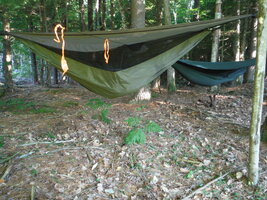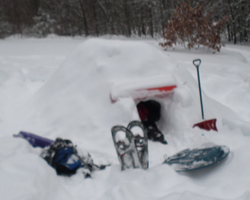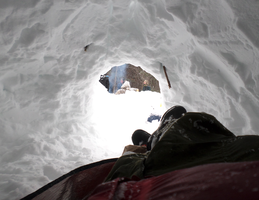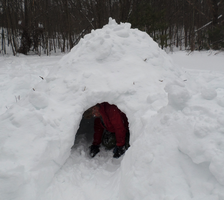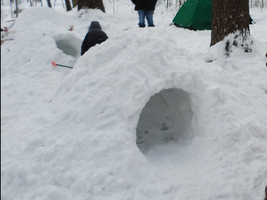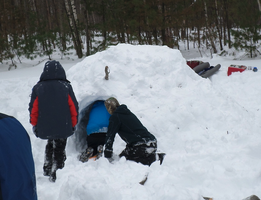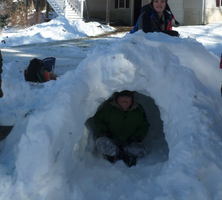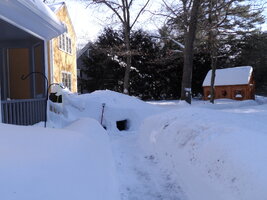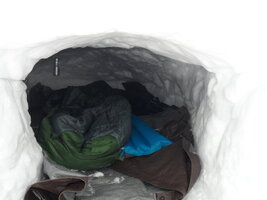Everybody post the coolest survival shelters they have seen or built themselves. Urban, wilderness or whatever.
Spent last night out under a poncho tarp shelter with light rain.
I haven't used this style shelter in many years, but it is great for dense woods and areas with heavy foot traffic - like a platoon patrol base or a Scout camp.
This shelter has worked for me very well in
every clime and place that has had trees.
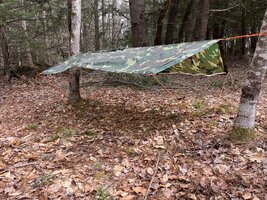
The trees are about 7' - 8' feet apart. The ridgeline is at about waist height and
for me this is a good distance as it allows me to sit up and do some work.
In the past I've written patrol orders, made map overlays, cooked food, briefed subordinate leaders, and cleaned weapons while sitting under this shelter in rainy conditions.
There are no tie outs for people to trip over.
The shelter is propped open with some sticks and steadied with cordage.
For
this application, spreader sticks are fairly wide. This gives a larger amount of workable space.
If the conditions warrant, the spreader sticks can be shorter - increasing the pitch of the tarp to allow for heavier rain and/or wind.
In this case I used orange paracord for clarity. (I got lucky with a small root to secure the paracord.)
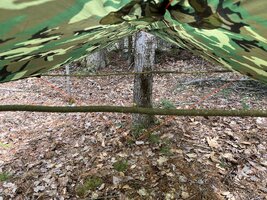
Otherwise, the stability cordage is secured by fabricating a stake. The round turn helps with keeping the wind from upsetting the shelter.
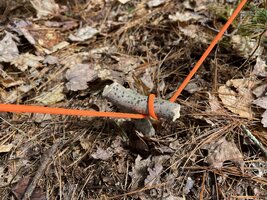
Normally, the shelter would have been used with green paracord and small green bungee cords.
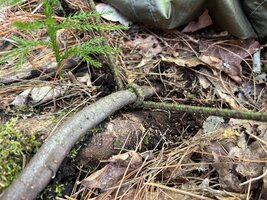
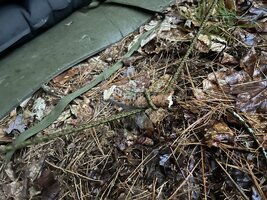
The spreader sticks are secured with a couple of half hitches or the bungee hooks.
Note how the knots and hooks are positioned to
pull the poncho on to the stick.
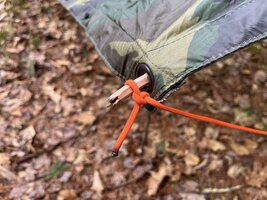
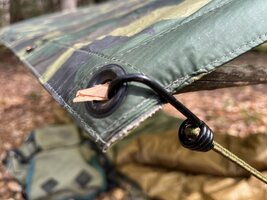
I layed out my sleep system; USGI Iso Mat, and Kifaru Doobie and did a few chores.
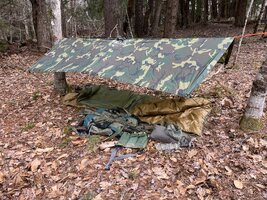
I was only about 200 yards from the house and after looking at the forecast again, I decided to go get my USGI poncho liner, a pillow, and (
new) ExPed DownMat Dura 8R.
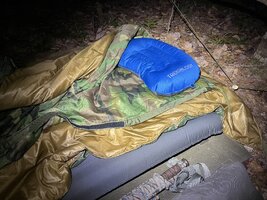
I bedded down around 2200 and the temp was 65*F
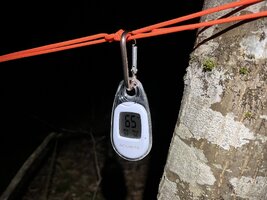
At first, I just climbed in my poncho liner; it has two sides Velcroed to make a light sleeping bag.
That only lasted about an hour as the temp began to drop and I needed to cover myself in the Kifaru Doobie.
I was comfortable the remainder of the night.
A light rain was falling each time I rolled over or got up to relieve myself.
In the morning around 0600 I got up to see that the thermometer had recorded a low temp of 43*F.
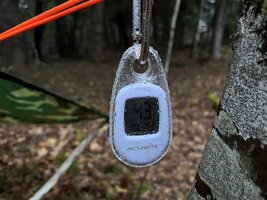
You can see the protection provided from the rain by the shelter as indicated by the dry area under it.
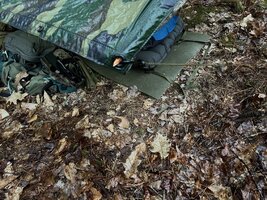
The dry area was even more pronounced as I took the shelter down.
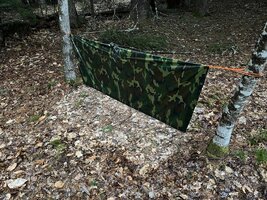
All in all a good time refreshing an old shelter style and practicing some skills.














